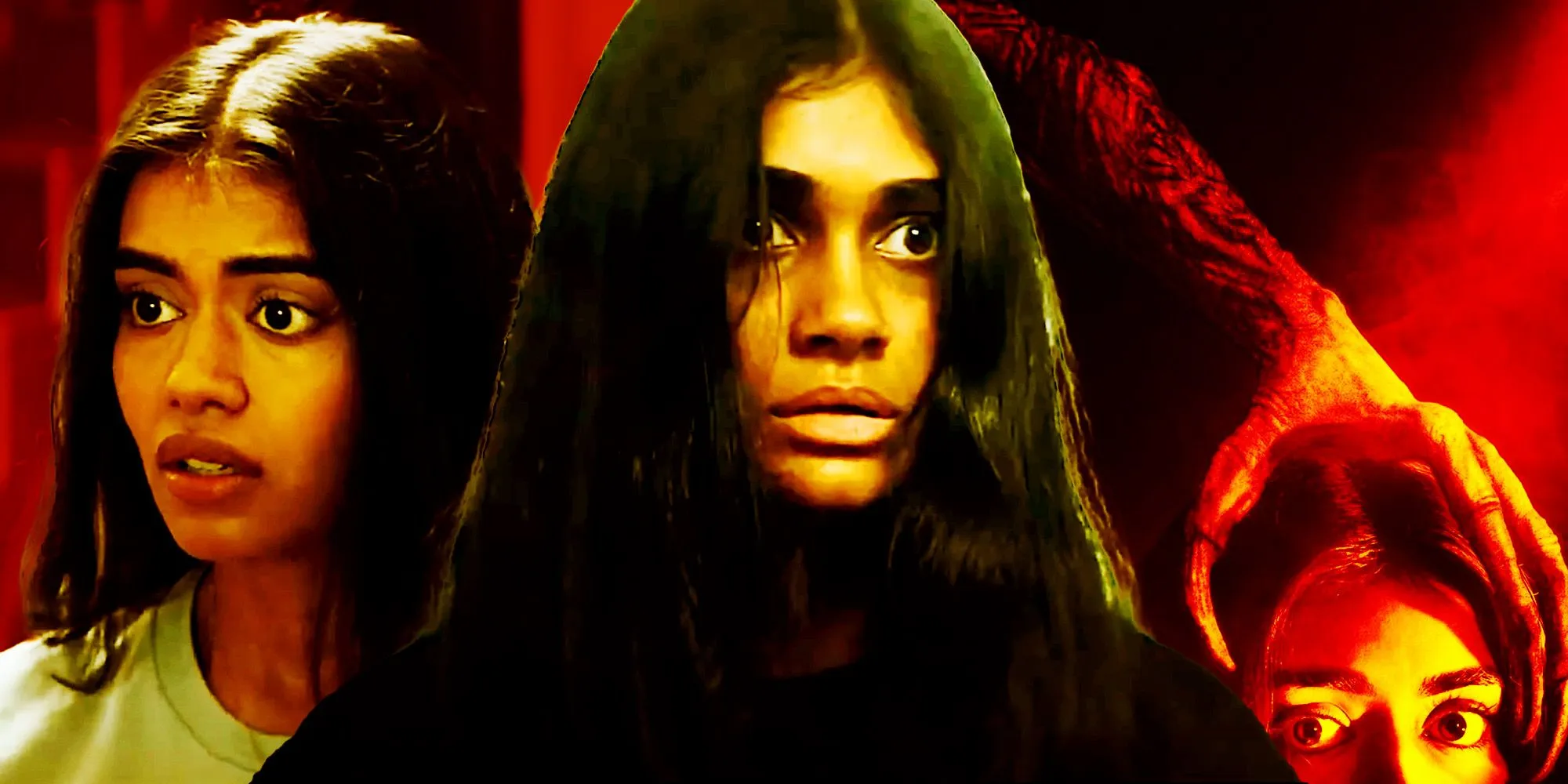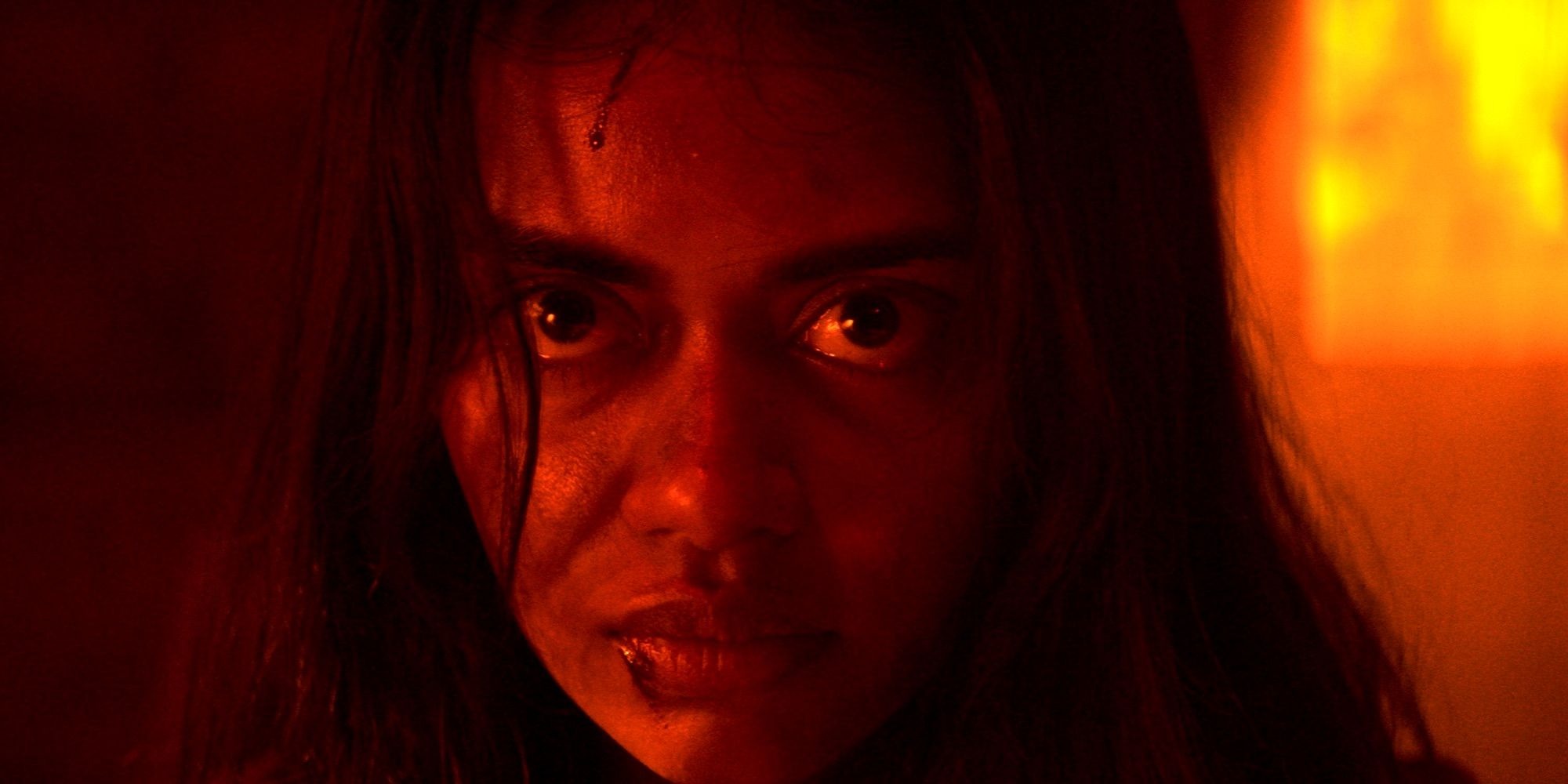At the climax of It Lives Inside, written and directed by Bishal Dutta, the story closes with Samidha (played by Megan Suri from Never Have I Ever) having taken in the terrifying Pishach, a dark entity that once drew its strength from Tamira’s fear and despair.
After Tamira vanishes due to the creature’s hold, and Samidha watches a close friend lose their life, she decides it’s time to seek her mother’s support. Even though there had been tension between Samidha and Poorna before, everything changes once she tells her mother the full truth. Poorna, who grew up hearing stories about such creatures, instantly believes her daughter and begins to help.

The price of survival is sharing your body with a soul-consuming monster
Poorna applies protective henna to Samidha’s hand, a cultural shield against the monster. But when the Pishach turns violent and injures her father, Samidha rushes to Karan’s house in a desperate move to protect Tamira before she’s completely consumed.
She faces the creature on her own terms, but Tamira, despite being weak, chants a sacred prayer, weakening the Pishach’s hold and revealing its form. Samidha finally deciphers the meaning behind Karan’s drawings—she must house the Pishach herself to trap it.
A year later, though everyone involved is still alive, the danger remains under control. Samidha becomes the container for the creature and feeds it meat to keep it calm. She reassures Tamira that the beast will never get out again as they remain determined to keep it contained.
Understanding The Pishach And How It Works
The creature known as the Pishach, or Pishacha, has roots in both Hindu and Buddhist traditions. While versions of its story may differ, It Lives Inside presents the Pishach as a being that consumes souls and thrives on despair and darkness.
It attaches itself to people through their sorrow, isolating them and removing anyone who stands in its way. The entity targets Samidha and Tamira specifically, intending to be alone with them so it can feast on their energy over a week before finally taking their souls.
Though the creature doesn’t speak, its strength grows as it feeds, and once it finishes with one victim, it quickly seeks another. There are versions of its myth that suggest it can transform its appearance, though this trait is not shown in the movie.
What is seen, however, is its ability to disappear from sight. The Pishach is drawn to locations where death occurred, which explains why it made itself at home in Kanan’s house.
Whether Samidha Can Hold The Pishach Forever
At the very end of It Lives Inside, Samidha is seen crying, which may be tied to the realisation that she might not be able to keep the Pishach under control for the rest of her life. Even though she assured Tamira that the creature will remain trapped, Samidha understands the kind of evil she’s dealing with.
The Pishach may not want to stay inside her permanently, and the ending reflects a quiet fear that she tries to hide from others. The creature, after all, is used to feeding on human souls and may tire of consuming only meat.
There’s a strong possibility that the Pishach, bitter over being trapped, could eventually try to break free, perhaps by attacking Samidha from within. Still, for now, it seems the creature has settled.
With regular feeding and no need to stay hidden anymore, the Pishach might remain dormant. However, expecting it to stay this way indefinitely would be too optimistic, especially considering its dark and insatiable nature.
What Samidha’s Future Might Look Like With The Pishach Inside Her
Despite everything that happened, Samidha accepts her role as the Pishach’s vessel with courage. But the danger isn’t gone. Before being trapped, the Pishach was already playing mind games with her, showing disturbing visions and pushing her toward isolation.
Now that it resides within her, the mind attacks may continue without anyone noticing. Her quiet tears at the end are a sign that she could already be feeling its influence. The creature might attempt to manipulate her thoughts and actions in secret, pulling her toward evil acts.
Time might make it worse, as Samidha could gradually lose her grip on reality if the Pishach gains control. Her efforts to appear strong for her loved ones may be covering up the fear that she’s slowly giving in to the creature’s will.
There is even the risk that her protective henna might wear off or lose its effectiveness, making her more vulnerable to the Pishach’s power. Samidha’s every move now requires careful thought, especially if the entity begins to use her as a feeding source.
What The Ending Suggests About A Possible Follow-Up
While It Lives Inside wraps up its main plot, the ending leaves space for more stories to come. Samidha’s quiet sorrow as Tamira walks away points to unfinished business. Though the creature is no longer roaming free, it hasn’t been destroyed.

There’s always the chance the Pishach could escape, maybe when the protective magic no longer holds, and return with vengeance. This idea could be the starting point for a second film, even though no official plans have been made. Whether a sequel happens or not, the current ending still stands strong on its own.
The Deeper Message Behind The Film’s Conclusion
At its core, It Lives Inside tells a story that reflects the emotional journey of those who grow up balancing two different cultures. Samidha clashes with her mother due to their opposing views, yet both feel a disconnect from those around them.
Their struggle is deeply personal—no one else around them truly understands what they are facing with the Pishach. Samidha’s desire to fit in means letting go of parts of her heritage, while Poorna stands apart by clinging to traditions that make her feel even more out of place.
Their relationship reflects a broader experience, with the Pishach standing in as a symbol for emotional struggles like depression. The creature’s grip tightens when Samidha turns away from her culture, making it stronger.
But by confronting the Pishach, Samidha also reconnects with the identity she had been trying to ignore. The film subtly addresses how such emotional struggles can feed off isolation and cultural detachment, and how healing can begin when one embraces their background instead of pushing it aside.
This unforgettable movie experience is currently streaming on Amazon Prime for all subscribers.



